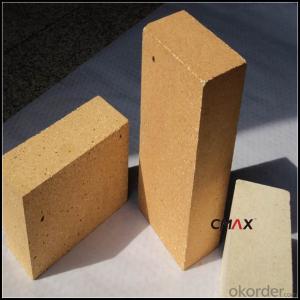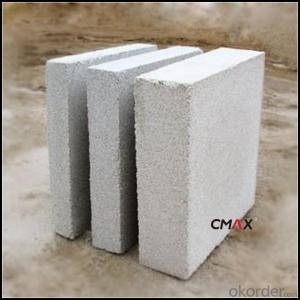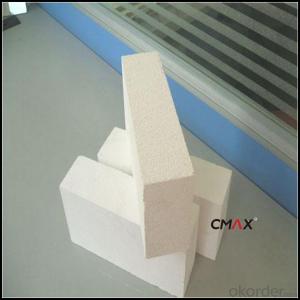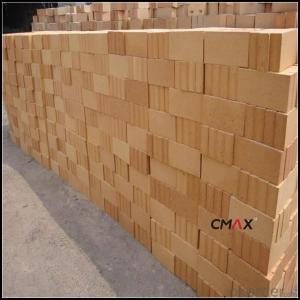Insulation Brick Refractory Heat Resistant Building Materials
- Loading Port:
- China main port
- Payment Terms:
- TT OR LC
- Min Order Qty:
- 2 m.t
- Supply Capability:
- 2000 m.t/month
OKorder Service Pledge
OKorder Financial Service
You Might Also Like
Insulating Brick
CMAX insulating firebricks are classified under temperature between 1300℃ to 1700℃, manufactured from high purity alumina clay.
Refractory brick is dense shaped refractory material. With high refractoriness and mechanical behavior under high temperature, refractory brick is the necessary material of high-temperature services, mainly used for industrial furnaces and kilns and thermal equipment.
Refractory brick for blast furnace is mainly used in stack, bosh, bellly and bottom of blast furnace.
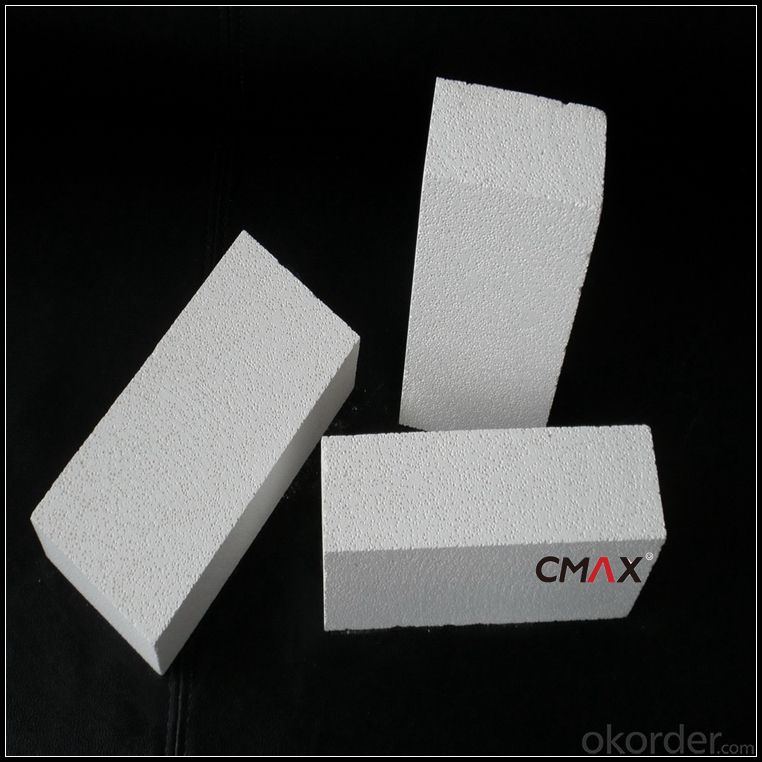
Insulating Brick Features
1.Refractory brick manufacturer
2.ISO9001:2000 certificate
3.Timely delivery and best service
Insulating Brick Application
glass industries iron & steel industries
ceramics industries non-ferrous metals industries
electrolytic Aluminum industries power generation industries
Heat surface fireproof lining other fire-proof back lining
Insulating Brick Data Sheet
Classification Temperature (℉/℃) | 3000/1650 |
Bulk Density (g/cm3 ) | ≤1.0 |
Thermal Conductivity | |
800℃, W/m.K | ≤0.39 |
1000℃, W/m.K | ≤0.43 |
1200℃, W/m.K | ≤0.48 |
Reheating Linear Change (%) | 1550℃×12h |
≤0.9 | |
Chemical Composition (%) | |
Al2O3 | ≥75 |
Fe2O3 | ≤0.5 |
Packaging & Shipping
Packaging Details:Be packed in fumigated wooden pallets
Delivery Detail: 30 days after order

Our Services
Optimum solution and product supply of refractories for high temperature industries, such as iron steel, non-ferrous, petrochemical and building materials.
Engineering design, contract and consult for refractories, and civil architecture design.
Research, development, manufacture and sale of superhard materials.
R&D, manufacture and sale of special packing materials for export.
Inspection, supervision and arbitration of refractories.
Consultation and services in refractories information.
Training and cultivation of high-level talents in refractories profession
Sales Network

Company Information
CNBM (China National Building Material) Group is the largest comprehensive building materials group in China that in integrate scientific research, manufacturing and logistics into one entity. The largest building materials and equipment specialists in China. Upon State Council approval, today CNBM owned more than 300 subordinate manufacturing factories and servicing companies. There are 6 fully owned public listed companies and 11 partially owned with substantial shares public listed companies. In many of these fields, CNBM is playing the leading role in the building industry in the country.
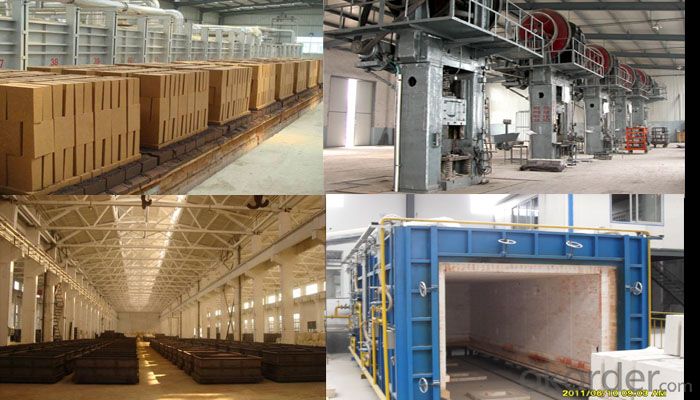
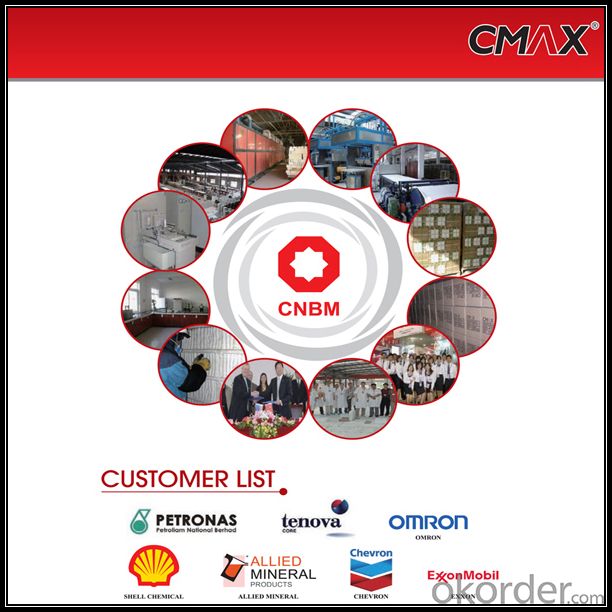
FAQ
1. Which products do you have?
We have all kinds of refractory brick, castable, mortar, cement, ceramic fiber products, etc.
Or you could browse our products to choose what you need.
2. Can you give me a brief introduction of the application of your products?
We are mainly specializing in the refractory materials in iron and steel, cement, glass, ceramics, petrochemical, electric power Industry, etc.
3. If I need your offer, what information do you need?
In order to choose suitable products, it will be appreciated to provide us the information, such us specification, technical data, order quantity, products application etc. If any question, please contact us freely.
- Q:What are the safety precautions when working with insulating fire bricks?
- To ensure the safety of yourself and others when working with insulating fire bricks, it is crucial to follow various safety measures. Consider the following key precautions: 1. Personal protective equipment (PPE): Protect yourself by wearing suitable PPE, such as heat-resistant gloves, long-sleeved clothing, safety goggles, and a respiratory mask. These items will safeguard you against potential burns, cuts, and the inhalation of harmful dust or fumes. 2. Adequate ventilation: Work in a well-ventilated area or utilize local exhaust ventilation to minimize exposure to dust and fumes that may be released during the handling or cutting of the bricks. 3. Fire prevention: Keep a fire extinguisher close by and ensure that the workspace is free of flammable materials. Although insulating fire bricks are highly refractory and can withstand high temperatures, it is still crucial to prevent accidental fires. 4. Proper lifting techniques: As insulating fire bricks can be heavy, employ correct lifting techniques and avoid overexertion to prevent strains or injuries. If necessary, use mechanical aids like trolleys or lifting equipment to move the bricks. 5. Cutting and grinding: Utilize appropriate tools in good working condition when cutting or grinding the bricks. This will minimize the risk of accidents or injuries. Pay attention to sharp edges and wear protective gloves to prevent cuts. 6. Temperature control: While insulating fire bricks are designed to handle high temperatures, avoid direct contact with hot surfaces. Use suitable tools or equipment to handle the bricks when they are at an elevated temperature. 7. Storage and handling: Store the bricks in a cool, dry place away from direct sunlight or extreme temperatures. Avoid stacking them too high to mitigate the risk of collapse or toppling. 8. Training and knowledge: Ensure that you have undergone proper training and are familiar with the characteristics and properties of insulating fire bricks. Understand their limitations and adhere to the manufacturer's guidelines for safe handling and usage. By adhering to these safety precautions, you can significantly decrease the likelihood of accidents, injuries, and health hazards when working with insulating fire bricks. Always prioritize safety in any workplace.
- Q:Can insulating fire bricks be used in boilers for steam generation?
- Yes, insulating fire bricks can be used in boilers for steam generation. Insulating fire bricks have excellent thermal insulation properties, which help to minimize heat loss and increase the overall energy efficiency of the boiler. Additionally, their high temperature resistance makes them suitable for the high heat and pressure conditions present in steam generation applications.
- Q:Can insulating fire bricks be used in contact with molten metals?
- Yes, insulating fire bricks can be used in contact with molten metals. Insulating fire bricks are designed to withstand high temperatures and provide excellent insulation properties. They are commonly used in applications where there is a need to contain and distribute heat, such as in kilns, furnaces, and industrial ovens. When in contact with molten metals, insulating fire bricks can withstand the extreme heat and prevent heat transfer from the molten metal to the surrounding environment. This helps to maintain temperature stability and protect the structural integrity of the equipment. However, it is important to note that the specific type and composition of insulating fire bricks should be carefully chosen based on the temperature and the type of molten metal they will come into contact with. Different metals have different melting points and can have varying corrosive effects on different materials. Therefore, consulting with experts or manufacturers is recommended to ensure the right type of insulating fire bricks are selected for each specific application.
- Q:What is the typical bulk density of an insulating fire brick?
- The typical bulk density of an insulating fire brick is around 0.6 to 1.2 grams per cubic centimeter (g/cm³).
- Q:How durable are insulating fire bricks?
- Insulating fire bricks are highly durable due to their high temperature resistance and ability to withstand thermal shock. They can withstand extreme heat, making them suitable for various industrial applications such as furnaces, kilns, and incinerators. Additionally, their insulating properties help reduce energy consumption by minimizing heat loss, making them a long-lasting and cost-effective solution for insulation needs.
- Q:Are insulating fire bricks resistant to electrical conductivity?
- Yes, insulating fire bricks are resistant to electrical conductivity.
- Q:Do insulating fire bricks have a high heat storage capacity?
- Yes, insulating fire bricks do have a high heat storage capacity. These bricks are designed to retain heat for extended periods of time, making them ideal for applications that require heat insulation and retention, such as furnaces, kilns, and fireplaces.
- Q:Can insulating fire bricks be used in the construction of refractory-lined vessels?
- Yes, insulating fire bricks can be used in the construction of refractory-lined vessels. Insulating fire bricks have excellent thermal insulation properties and can withstand high temperatures, making them suitable for lining vessels that require heat insulation and refractory properties.
- Q:Are insulating fire bricks easy to cut or shape?
- Insulating fire bricks are relatively easy to cut or shape compared to other types of bricks. This is primarily due to their lower density and composition, which allows them to be more easily manipulated with standard masonry tools. However, it is important to note that the level of ease may vary depending on the specific type and brand of insulating fire brick. Some may require special tools or techniques for cutting or shaping, while others may be more user-friendly. It is always recommended to consult the manufacturer's instructions or seek professional advice when working with insulating fire bricks to ensure proper cutting or shaping techniques are employed.
- Q:Can insulating fire bricks be used in ladle covers?
- Insulating fire bricks can indeed be used in ladle covers. These bricks are specially designed to have low thermal conductivity, which means they can effectively insulate and retain heat. Ladle covers are used in foundries and other high-temperature industries to keep molten metal or other materials hot and prevent heat loss. By using insulating fire bricks in ladle covers, the heat is better retained, resulting in improved energy efficiency and reduced fuel consumption. Additionally, these bricks have high refractory properties, allowing them to withstand the extreme temperatures and thermal shock that ladles are subjected to. Overall, insulating fire bricks are an excellent choice for ladle covers, as they help to maintain temperature stability and conserve heat.
1. Manufacturer Overview |
|
|---|---|
| Location | |
| Year Established | |
| Annual Output Value | |
| Main Markets | |
| Company Certifications | |
2. Manufacturer Certificates |
|
|---|---|
| a) Certification Name | |
| Range | |
| Reference | |
| Validity Period | |
3. Manufacturer Capability |
|
|---|---|
| a)Trade Capacity | |
| Nearest Port | |
| Export Percentage | |
| No.of Employees in Trade Department | |
| Language Spoken: | |
| b)Factory Information | |
| Factory Size: | |
| No. of Production Lines | |
| Contract Manufacturing | |
| Product Price Range | |
Send your message to us
Insulation Brick Refractory Heat Resistant Building Materials
- Loading Port:
- China main port
- Payment Terms:
- TT OR LC
- Min Order Qty:
- 2 m.t
- Supply Capability:
- 2000 m.t/month
OKorder Service Pledge
OKorder Financial Service
Similar products
New products
Hot products
Related keywords
